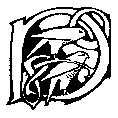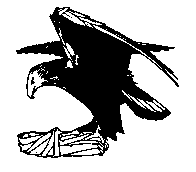[From Castle Rushen, Armitage Rigby,
1927]
CHAPTER XI.
DATE OF ERECTION.
 RECORD of the building of the Castle has as yet been discovered. The
natural consequence is that the public has readily adopted the wholly
improbable date offered by historians, who wrote before the study of
Mediaeval Architecture had developed. Unfortunately, any attempt to
shew that the accepted date is incorrect is rather a thankless task,
in view of the fact that there is little probability of being able to
substitute a definite date in its place. For the present one must be
content to submit the most probable half-century.
RECORD of the building of the Castle has as yet been discovered. The
natural consequence is that the public has readily adopted the wholly
improbable date offered by historians, who wrote before the study of
Mediaeval Architecture had developed. Unfortunately, any attempt to
shew that the accepted date is incorrect is rather a thankless task,
in view of the fact that there is little probability of being able to
substitute a definite date in its place. For the present one must be
content to submit the most probable half-century.
Perhaps the best way of approaching this task is to give the chief
authorities for the accepted date 947.
" Brittanica Curiosa," published in 1776, gives the date as about
960 on the authority of the Manks' tradition.
Train's history (1845) has the following entry:-" 947 Gorree was
succeeded as King of Man by his son Guthred, who commenced building
the Castle of Rushen which was finished A.D. 960, and in which he
lies buried."
Cumming's History of Castle Rushen (1857) states: "947 Guthred or
Godrod founded Castle Rushen."
Other authors have followed suit, and though some of the later
writers suggest that the architecture does not bear out this date,
there has been no serious attempt to fix a more probable date.
Even Cumming had some qualms about the date he adopted, for on
another page we read: " and of its great antiquity there is no doubt,
even should the date 947 fixed upon for its commencement be
incorrect."
Now what are the reasons for the faith of these historians? The
author of " Brittanica Curiosa" relies on the authority of the Manks'
tradition, and though tradition is most useful in many respects, it
is generally very weak in dates.
Train contents himself with the statement of the years of
commencement and completion, embellished by the assertion that the
builder was buried there. Apart from the improbability of Guthred
being buried in the Castle, Train's chronology of the Kings of Man is
not supported by later historians, and there is no reason to place
any confidence in his dates.
But Cumming is not content with bare statements. He produces proof
in the shape of an old oak beam. He says: " This date was found on an
old oak beam, along with some apparently Maeso-Gothic characters, in
making some repairs in the Governor's house a few years ago." But
after triumphantly bringing out his proof he at once throws cold-or
at all events tepid water-on it, as quoted above.
Without for a moment suggesting that it is impossible for a beam
to bear an inscription for 900 years, it is sufficiently unlikely, in
this climate, to require strong corroborative evidence. But such
evidence is entirely wanting, while there are strong reasons for
refusing the inscription as a date at all.
Firstly, he says the beam was found in the " Governor's house," a
building known to have been erected in 1644.
Secondly, the figures are Arabic numerals which are believed not
to have been used in Western Europe for three centuries after
947.
Thirdly, the letters are not Maeso-Gothic characters, but quite
usual 16th or 17th century letters.
Then there is no reason for supposing that the inscription
represents a date at all. It is much more probably a builder's or
timber merchant's mark. This is a somewhat mournful conclusion,
because the beam was cut up and made into several boxes. The original
inscription still exists on the lid of one of them, which is, or was
recently, in the possession of the Duke of Athol.
Perhaps this beam throws some light on the methods of making
history. It appears to have been found in 1815. Before its discovery,
the accepted date of the Castle was 960. But Train, who wrote after
the discovery, had two dates to deal with, namely, the accepted 960
and the 947 on the beam. No doubt the coincidence of the figures on
the beam representing a date so near to that already accepted was the
reason for the enthusiastic welcome accorded to the discovery. All
that Train had to do was to solve the reason of the very slight
difference. This was so simple that the result is entered without
remark, and we learn that the building was commenced in 947 and
finished in 960.
In order to thoroughly clear the ground, another date ( ?) which
has been quite recently discovered on the stone head of the doorway
leading from the open court of the keep or inner ward to the North
spiral staircase, may be considered.
This at all events has the advantage of being on stone. It is
difficult to imagine that in a building where an unusually small
amount of timber was used, a buried beam should have been used for
the record of the date of commencement. But here we have marks cut
into hard limestone, and that they have been there for many years is
clear from the number of coats of whitewash with which they were
covered, amounting to about threequarters of an inch in thickness.
According to the light, the marks look like 1011 or IOM or IOH. They
are worth further study, but the idea that they genuinely represent
the date 1011 may be dismissed. In the first place, the Arabic
numerals again appear before their time, and secondly, appear on a
14th century door head. Also it was, to say the least, very unusual
to date buildings in the British Islands in the 11th century.
Whatever may be urged in favour of these supposed dates, we may
dismiss them as having reference to any portion of the existing
buildings. There may have been an earthwork fort on the same site at
an early period, but probably the immediate predecessor of Castle
Rushen was the Norman matte, the remains of which may be seen on the
Halsall Trust land about a mile from the present Castle.
Having freed our minds of two very improbable dates, the field is
clear for constructive study. The guides one would naturally choose,
in the absence of reliable documentary evidence, are:-
1. The general history of Castle building in Great Britain.
2. The history of the Isle of Man.
3. The architectural character of the building in question.

 RECORD of the building of the Castle has as yet been discovered. The
natural consequence is that the public has readily adopted the wholly
improbable date offered by historians, who wrote before the study of
Mediaeval Architecture had developed. Unfortunately, any attempt to
shew that the accepted date is incorrect is rather a thankless task,
in view of the fact that there is little probability of being able to
substitute a definite date in its place. For the present one must be
content to submit the most probable half-century.
RECORD of the building of the Castle has as yet been discovered. The
natural consequence is that the public has readily adopted the wholly
improbable date offered by historians, who wrote before the study of
Mediaeval Architecture had developed. Unfortunately, any attempt to
shew that the accepted date is incorrect is rather a thankless task,
in view of the fact that there is little probability of being able to
substitute a definite date in its place. For the present one must be
content to submit the most probable half-century.